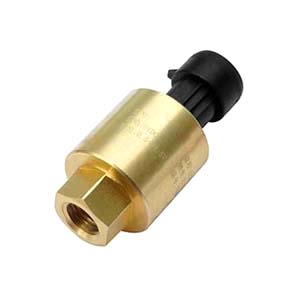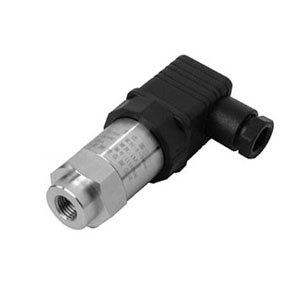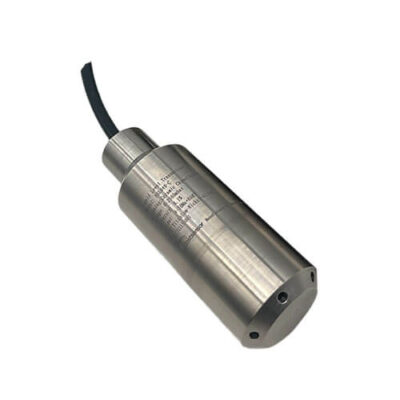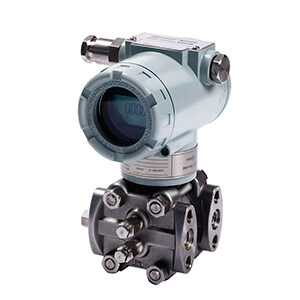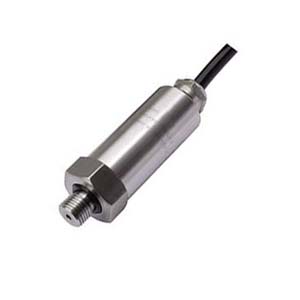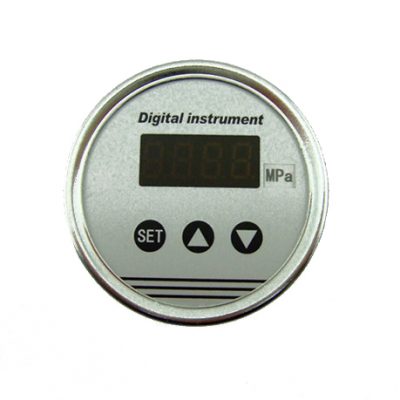Thread Gender & Handedness
What does the Thread Gender mean?
When we do process connection, every matched pair of threads, external and internal, can be described as male and female. For example, a screw has male thread, while the matching hole has female thread.

What is the Handedness of Thread?
The helix of a thread can twist in two possible directions. Most threads are oriented so that the threaded item when seen from a point of view on the axis through the center of the helix moves away from the viewer when it is turned in a clockwise direction, and moves towards the viewer when it is turned counter clockwise. By common convention, right-handedness is the default handedness for screw threads. Therefore, most threaded parts and fasteners have right handed threads.

Diameter & Angle
What do thread PITCH/TPI and DIAMETER mean?
- The pitch is the distance from the crest of one thread to the next in mm. TPI (Threads per inch) is used by inch thread.
- The major diameter is determined by the thread tips.
- The minor diameter is determined by the groove of the thread.
- The pitch diameter is the distance of two opposite flanks or the distance of the centerline of the profile.

What does thread ANGLE and CREST/ROOT mean?
The flank angle is the angle between the flank of a screw thread and the perpendicular to the axis of the screw. Tapered threads have a taper angle. This is the angle between the taper and the centre axis of the pipe.
The outer-most part of the thread is called crest, the inner-most part of the thread is called root.

Tapered & Straight
How to determine if the thread is tapered or straight (parallel)?
Use a caliper to measure the nominal male or female thread crest-to-crest diameter on the first, fourth, and last full threads. If the diameters increase for a male end or decrease for a female end, the thread is tapered. If all the diameters are the same, the thread is straight (parallel).

What is the difference among BSP-P, BSP-G and BSP-T?
There are mainly two ways of identifying a British Standard Pipe parallel (BSP-P) thread for Process Connection, either with the thread size suffixed by “BSP-P” or prefixed with “G”. Often the 2nd P is left off because BSPT tapered threads are less common and BSP is assumed to be parallel unless otherwise specified.
Ways to seal the Tapered Thread and the Parallel/Straight Thread
A: Not yet, there is a difference in how straight and tapered threads seal. A straight thread will rely on either a seal O-ring or a gasket. Pressure connections which include the suffix EN 837 or DIN 16288 are sealed on the end of the thread with a small diameter O ring groove which is placed on the shoulder of the hex. In the female mating part of the pressure connection there is a hole with sufficient diameter to locate the male end post without pinching the O ring.
However, a tapered thread requires thread sealant – either a compound or thread tape. Tapered thread seal is accomplished via metal-to-metal wedging; tapered threads ALWAYS require thread sealing (tape or liquid).
What’s more, Liquid Thread-seal is a special adhesive which require 2 things to cure: 1, no air; 2. metal surface (chemical reaction with carbon in the seal)

What need to pay attention before seal the Tapered Thread?
The seal is designed to take place between the tapered threads. Tapered pipe threads always need a sealant to seal system fluids and reduce the potential for galling of the threads. The Tapered thread sealant performs both the lubricating and sealing functions. If the two pieces of metal are forced against each other without lubrication, galling is possible.
After following the sealant and lubricant application instructions, the amount of tightening is discretionary. There is no standard for torque or number of turns.
Is there any tip to easily tell the difference between Parallel and Tapered threads?
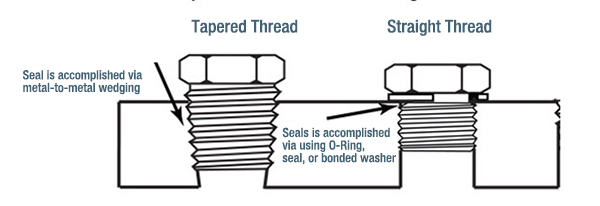
Threads may be parallel or tapered, as the name suggest, tapered fitting tapers from a large diameter to smaller one.
A parallel (Straight) thread often has a “spigot” at the end of the process thread where it seals, especially when it comes to EN837 or DIN 16288, this makes for easy identification.
Does 1/2 NPT male thread fit 1/2 BSP port?
No, BSP or G parallel threads are not compatible with NPT tapered threads, ideally you should use an adapter between the two threads to be sure of a reliable seal between the two different types of thread.
Is there any difference between 1/4G and 1/4NPT female threaded connectors?
Yes there is a difference and they are not compatible with each other: 1/4G normally written as G1/4 or 1/4BSP(P) is a parallel thread typically used in Europe.1/4 NPT is a tapered thread typically used in USA.
What is 0.25-18 NPT male?
It is a type of tapered thread process connection, normally written as 1/4inch – 18 NPT male, the 1/4 inch (0.25″) refers to the nominal NPT pipe size and the 18 refers to the number of threads per inch.
How does a 1/4-19BSP P differ from a 1/4 BSP P thread?
They are both the same, since the ’19’ refers to 19 threads per inch (tpi) which is the standard thread pitch for a 1/4 BSP P thread.
What does NPTF stand for: Female, Fine, or Fuel?
NPTF stands for National Pipe Taper Fuel. This could be male or female. NPTF is designed to provide a more leak free seal without the use of teflon tape or other sealant compound. A common mistake is to assume that NPTF stands for NPT female or NPT fine. NPT fine does not exist.
What Thread Identification Tools are often used?
Caliper: A caliper is used to determine the thread diameter. (Calibration of calipers is the responsibility of the end user.)
Combination Seat and Pitch Gauge: Seat and pitch gauges are conveniently combined into one tool. The seat gauge is used to determine end connection seat angles of 45°, 37°, and 30°. The pitch gauge is used to identify the thread pitch.

Note that a pitch gauge may be Unified (threads per inch), Whitworth (threads per inch), or metric (millimeters per thread) as marked on the back of each gauge form.
Click to check related knowledge:
4 Types of Thread Process Connections 1/2
4 Types of Thread Process Connections 2/2

